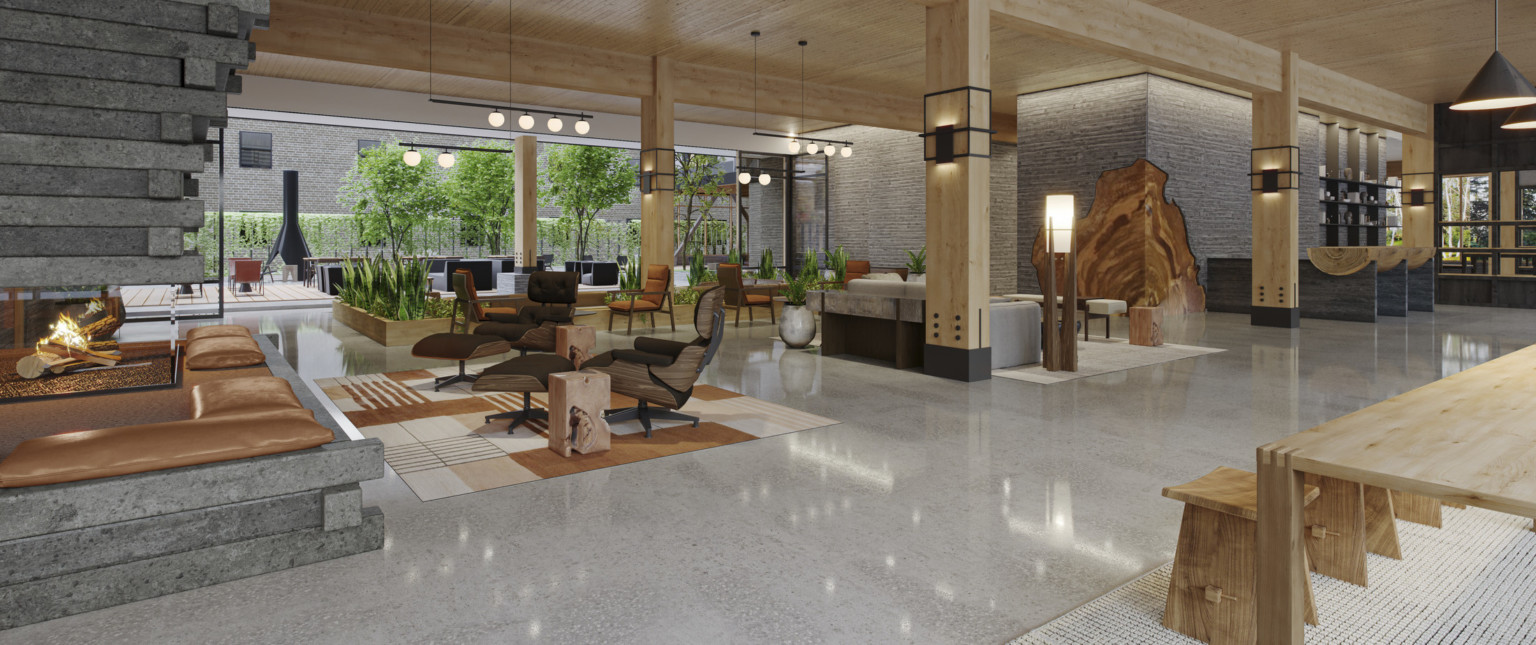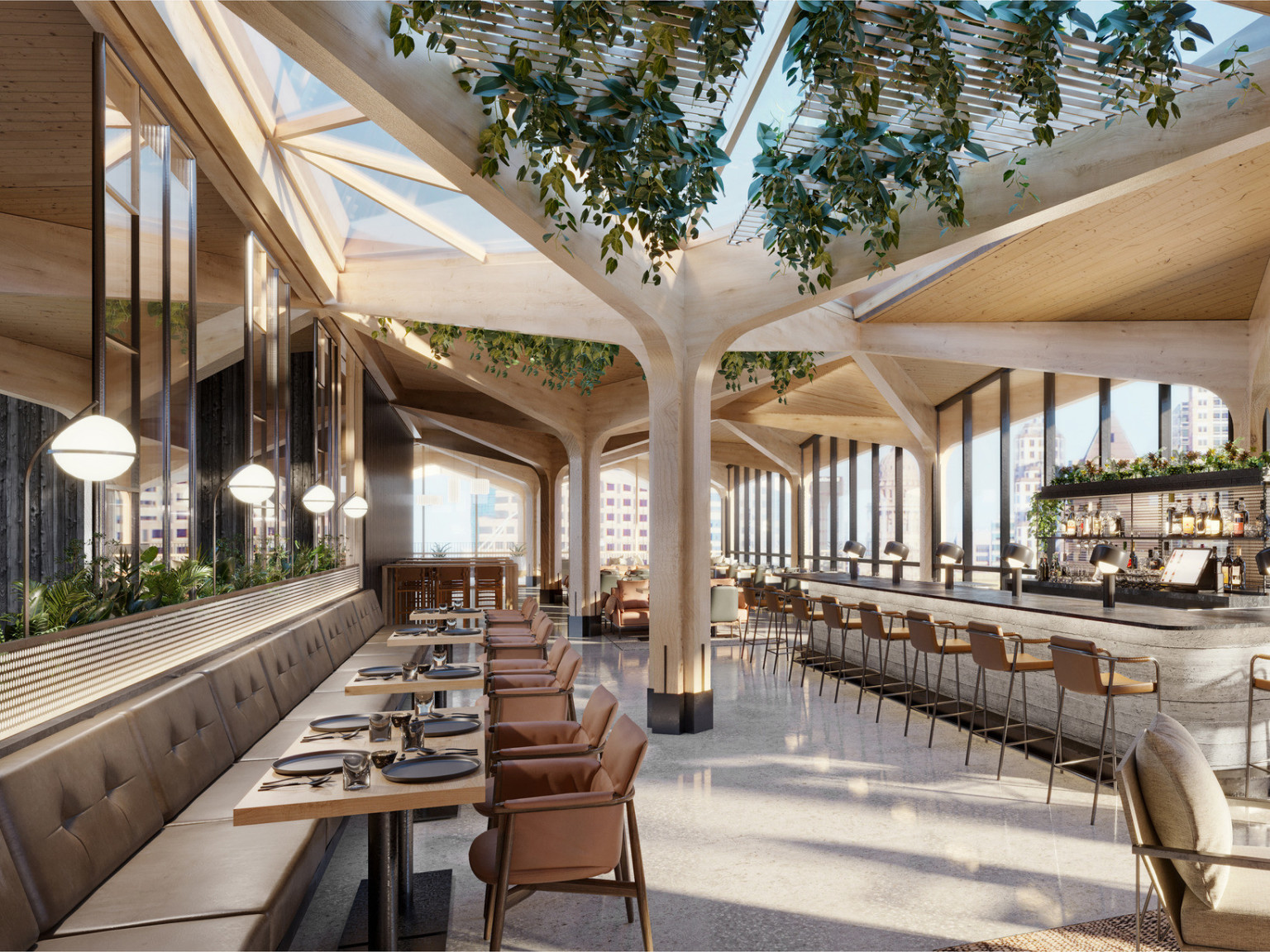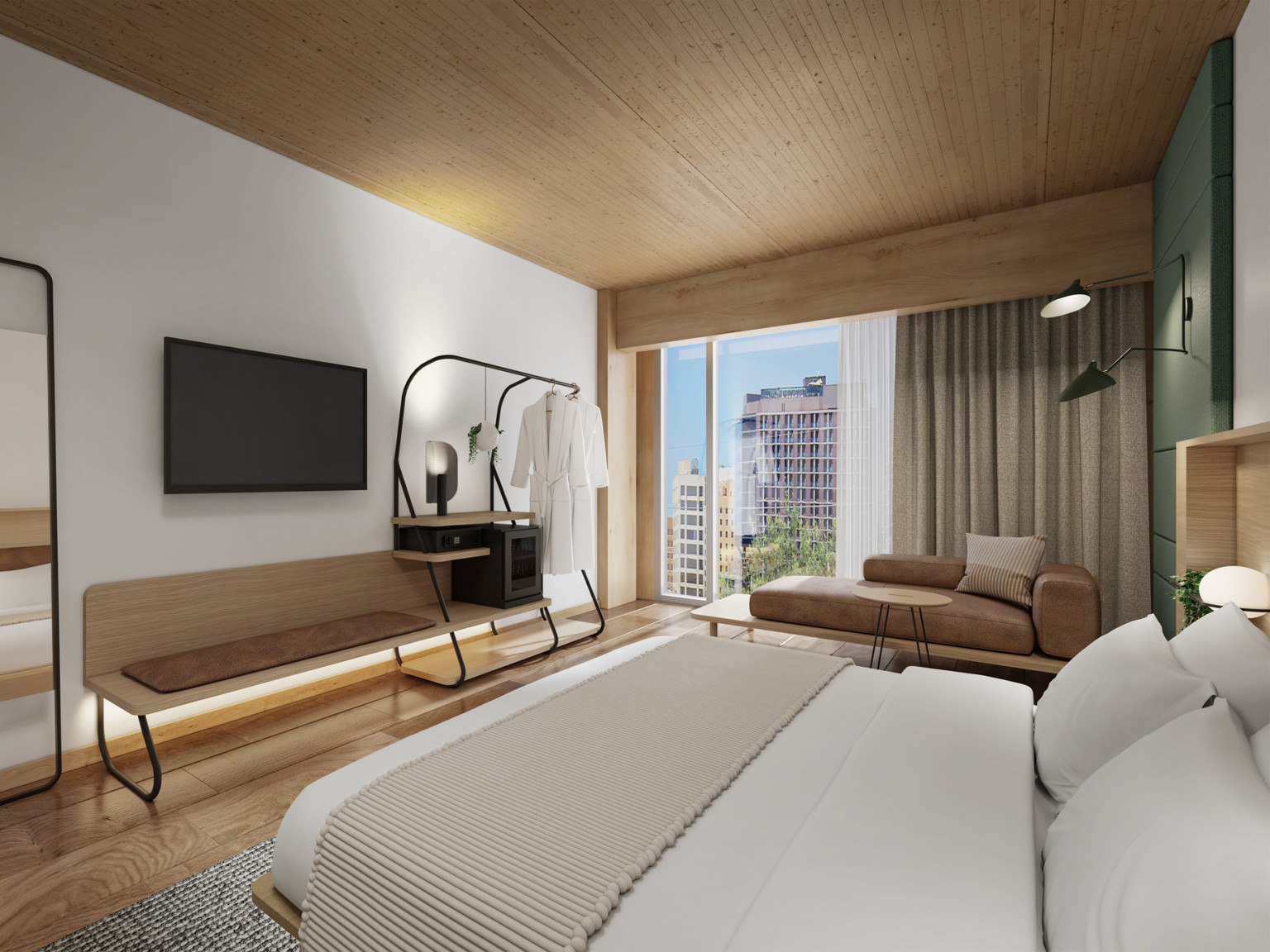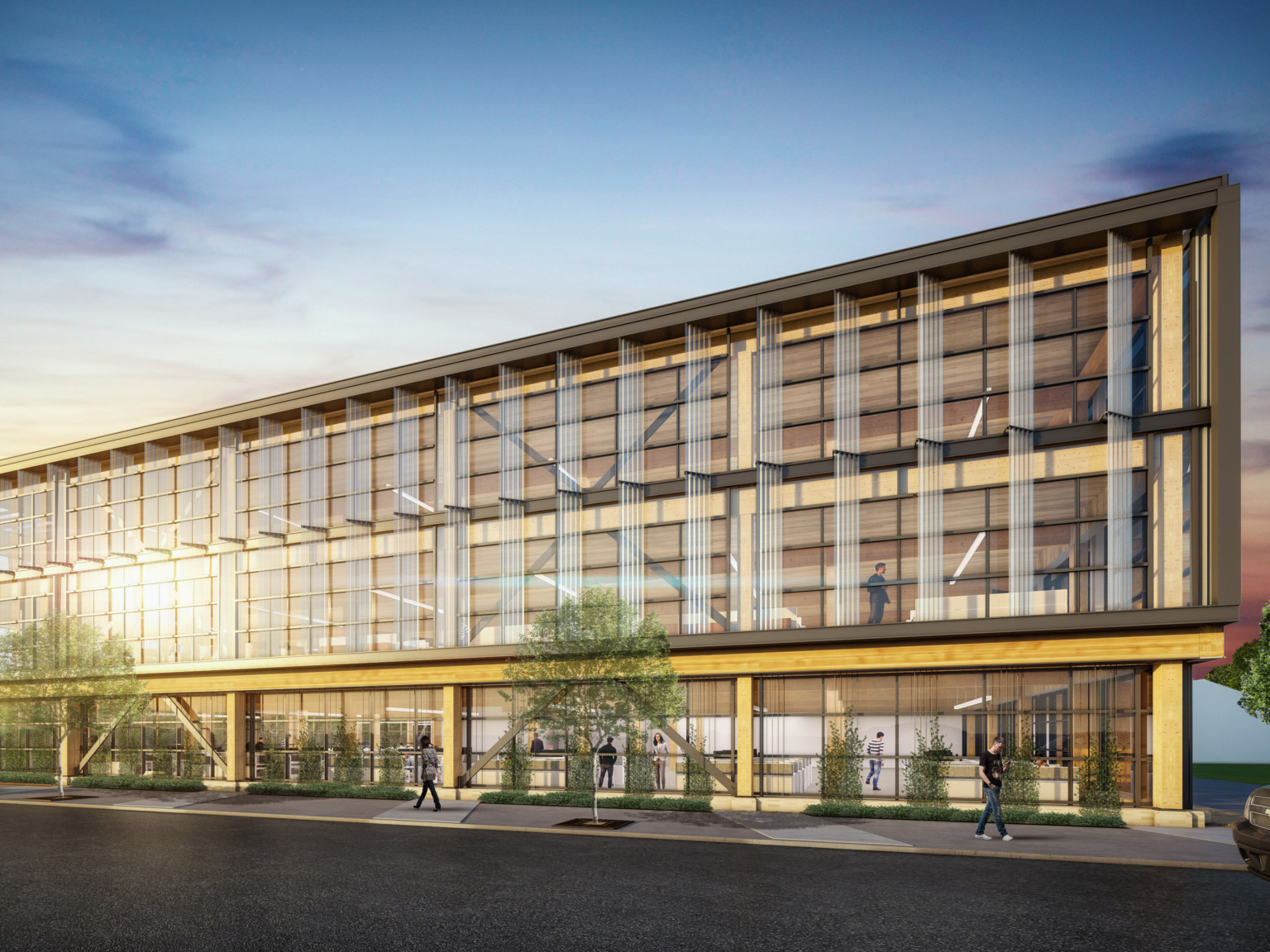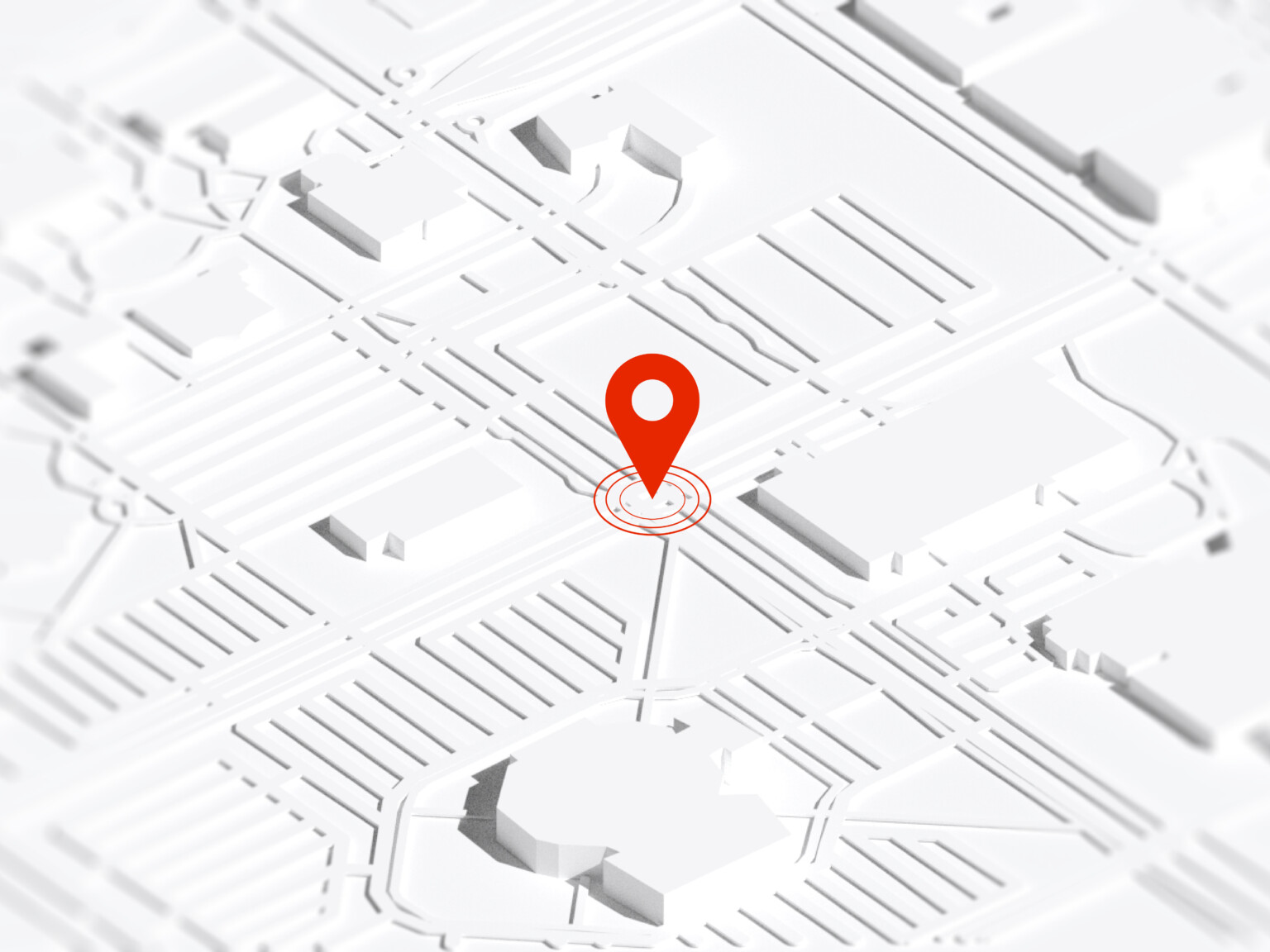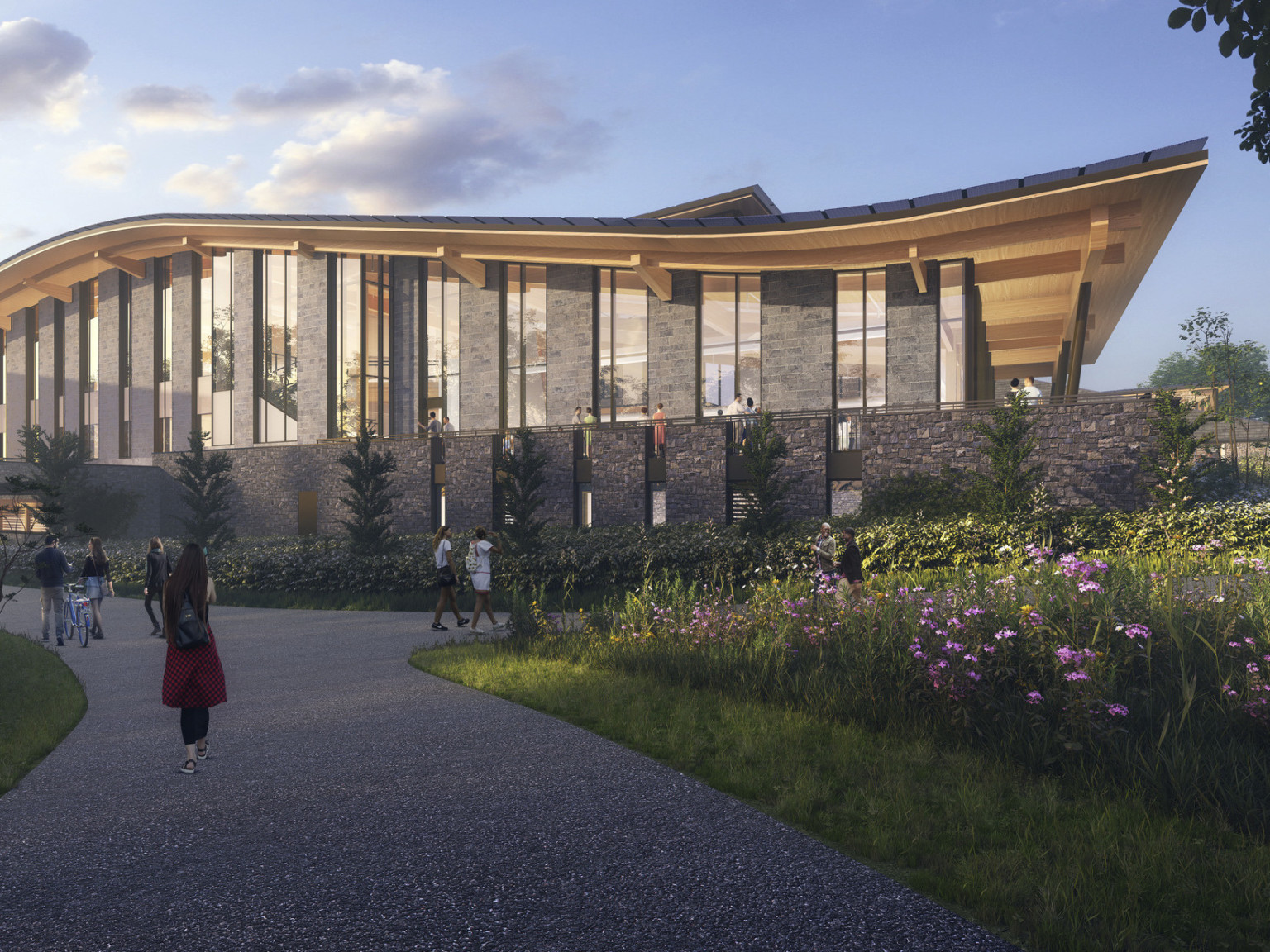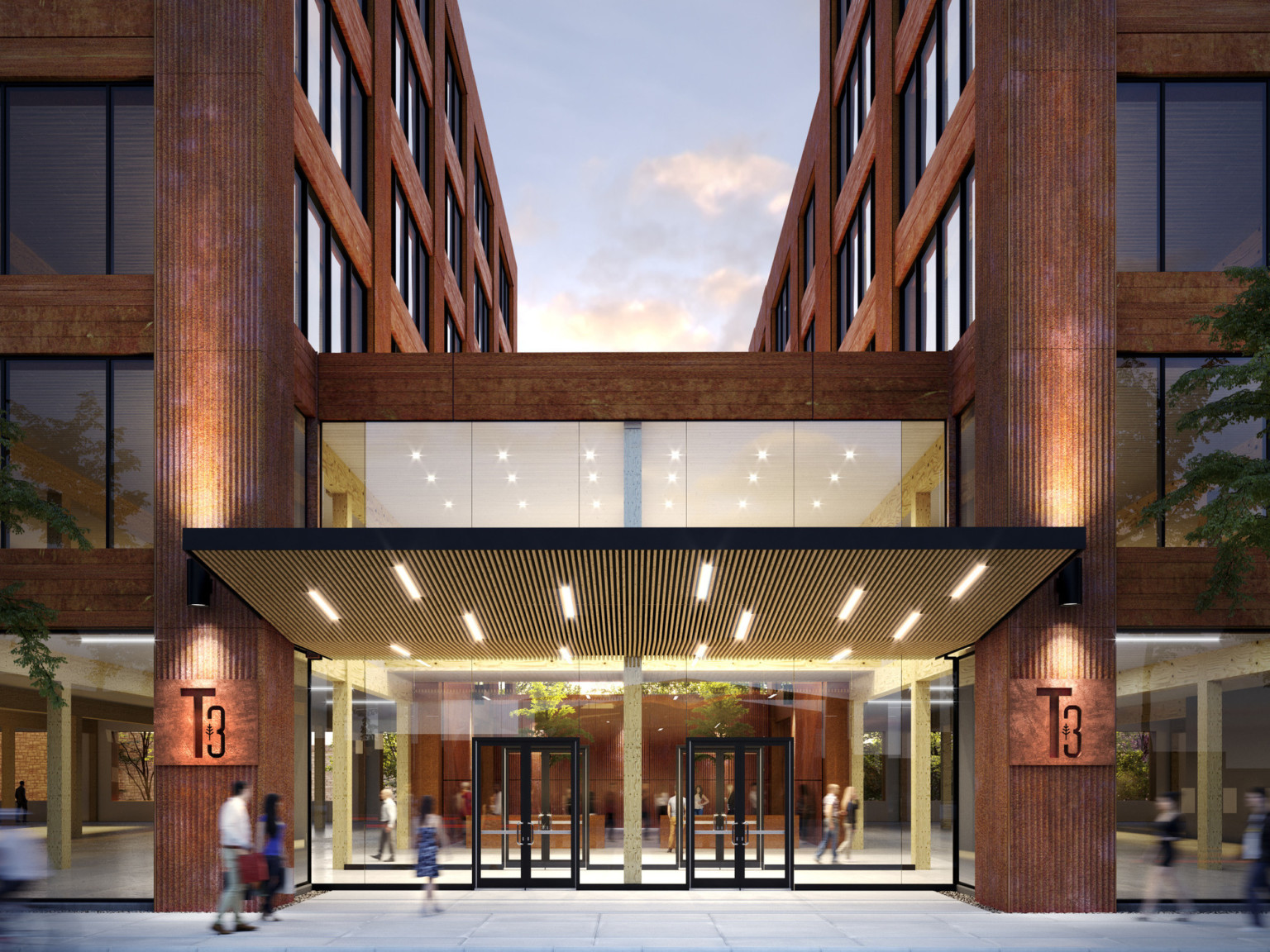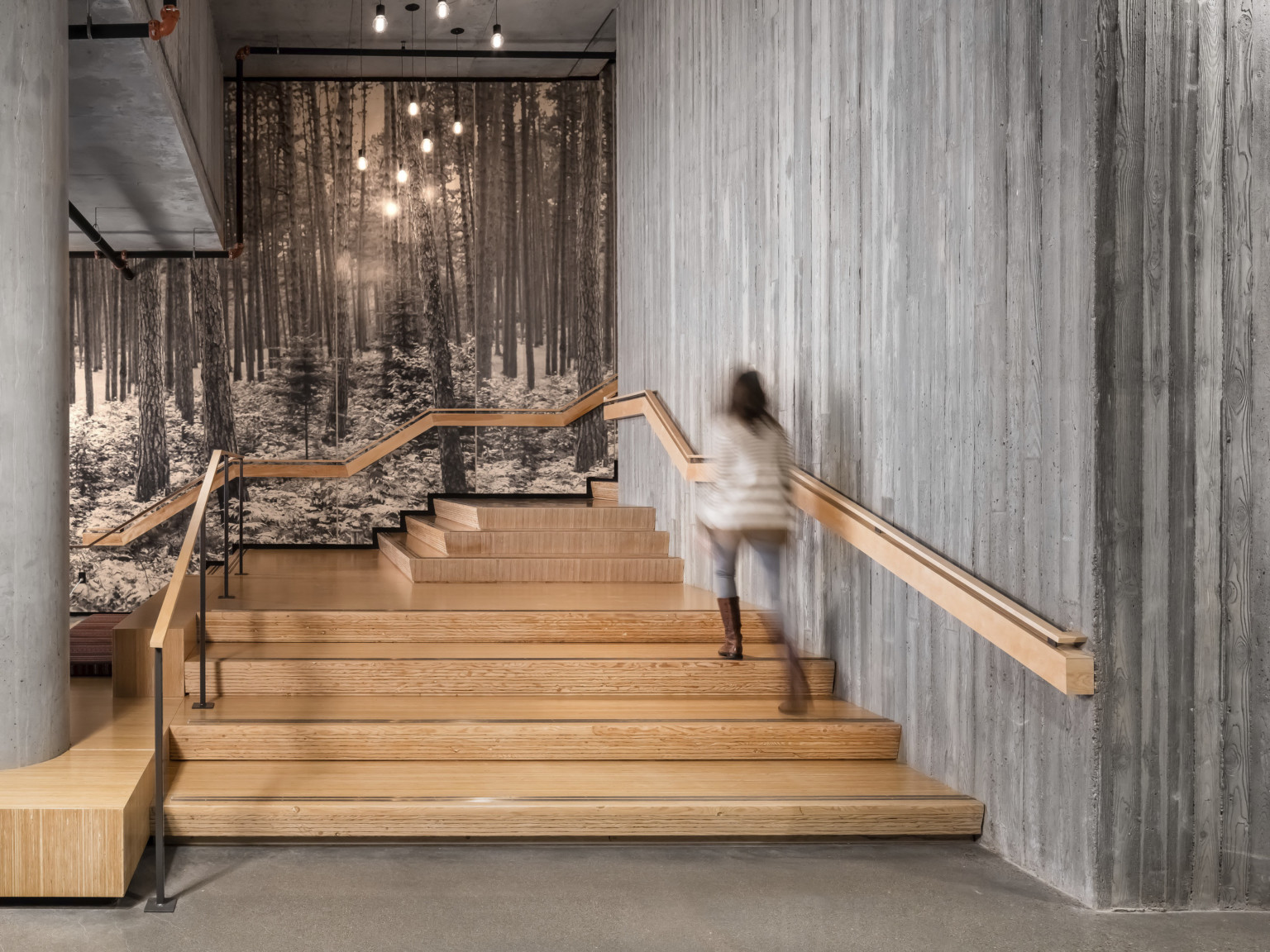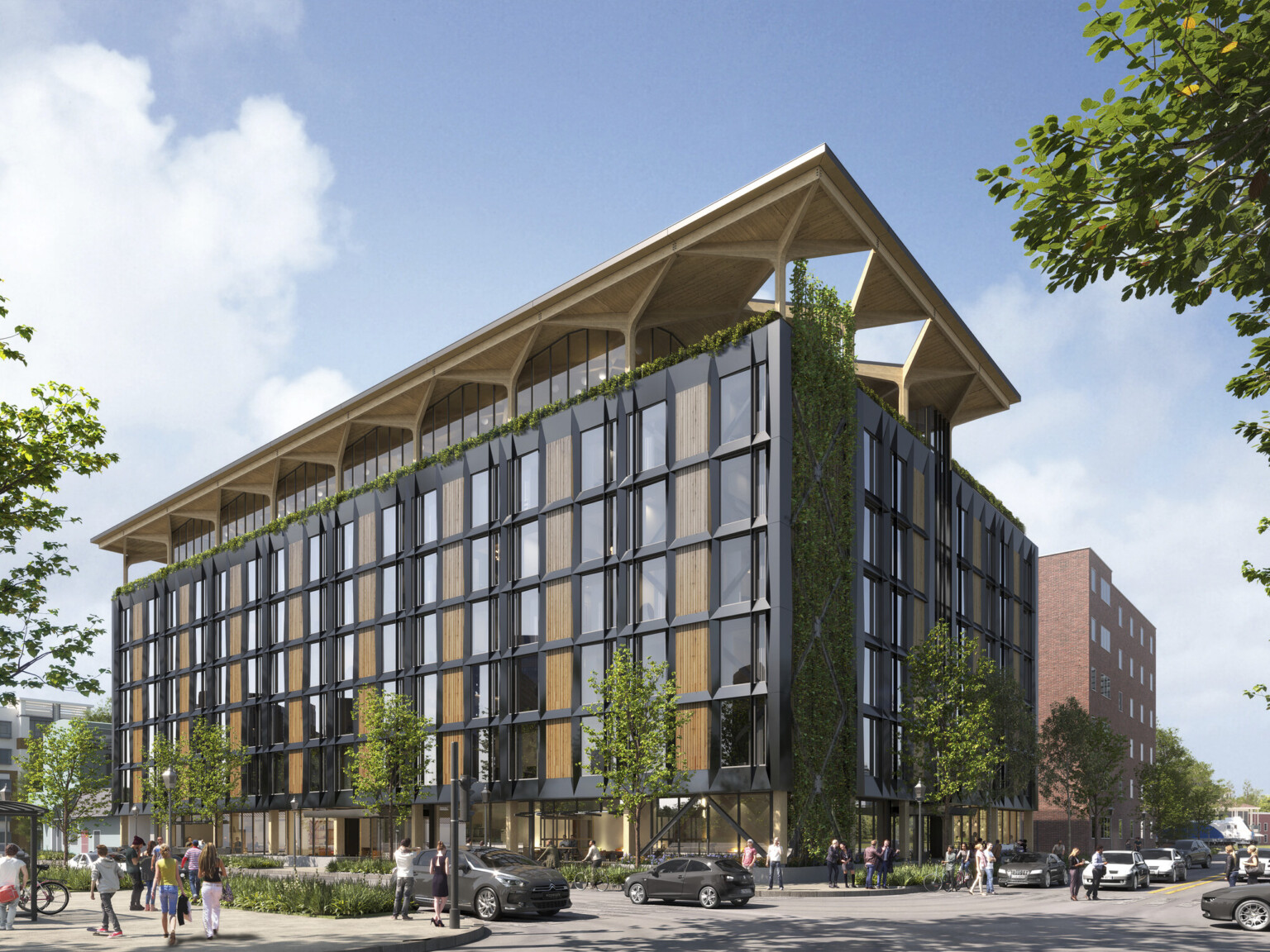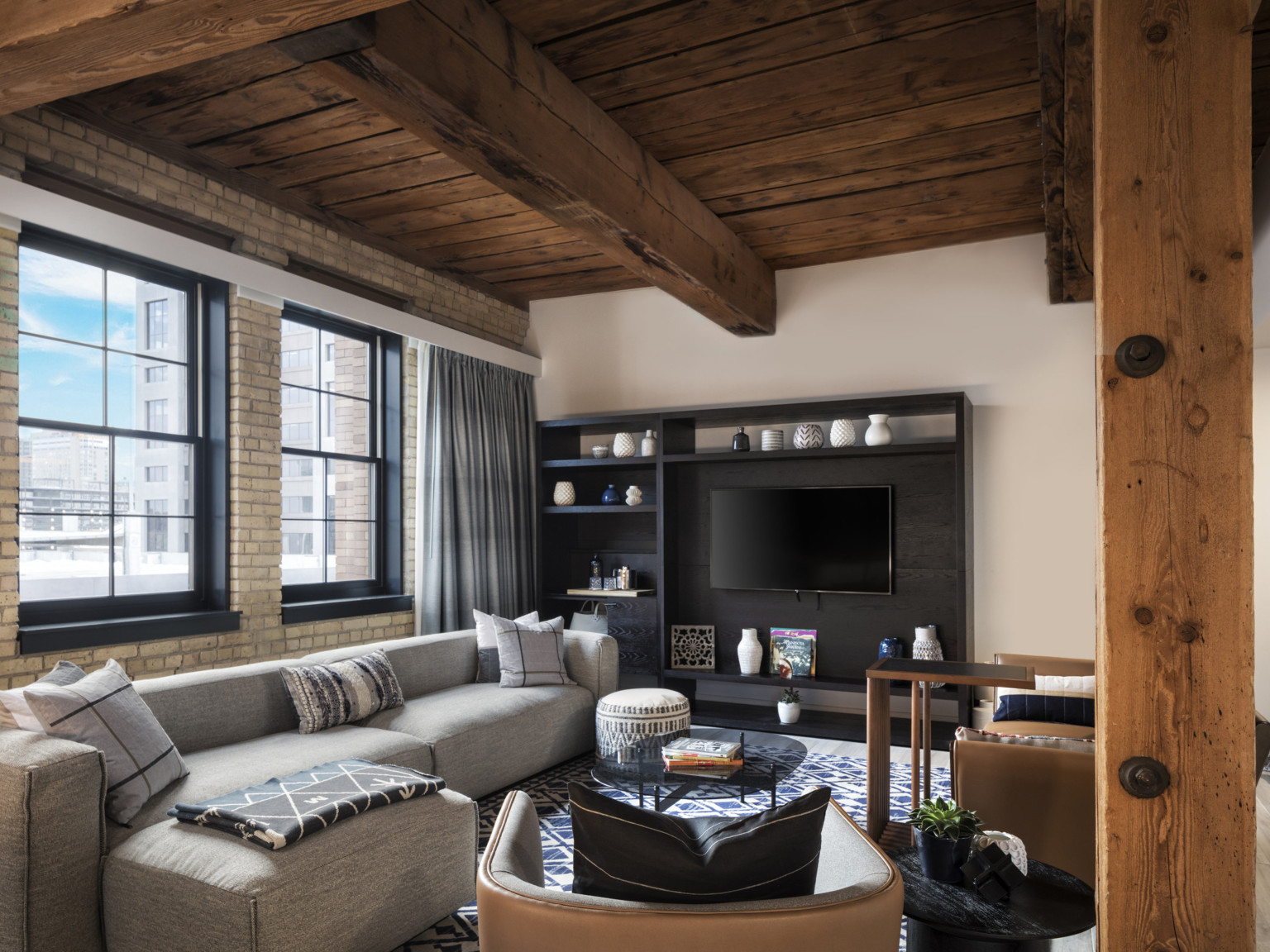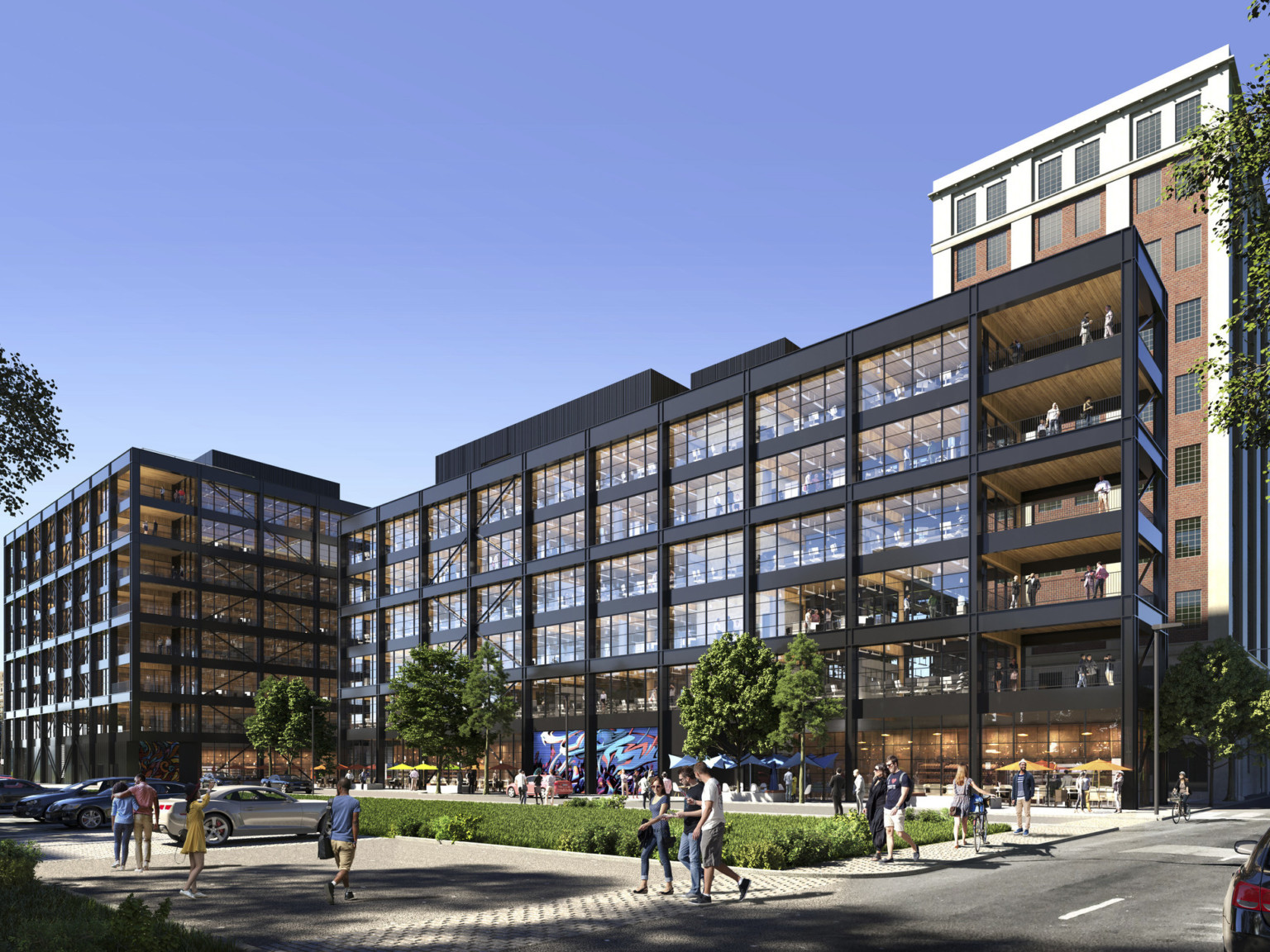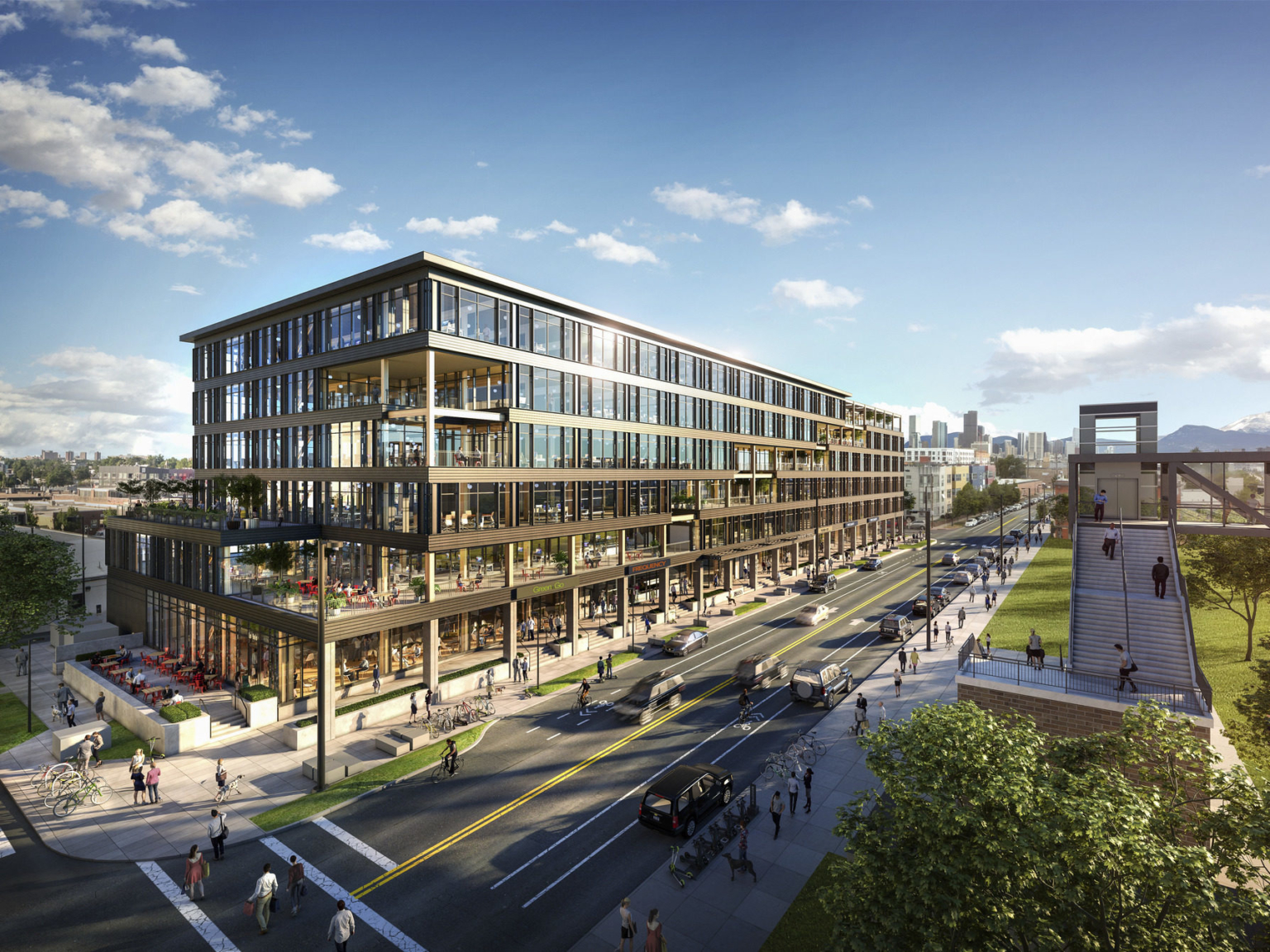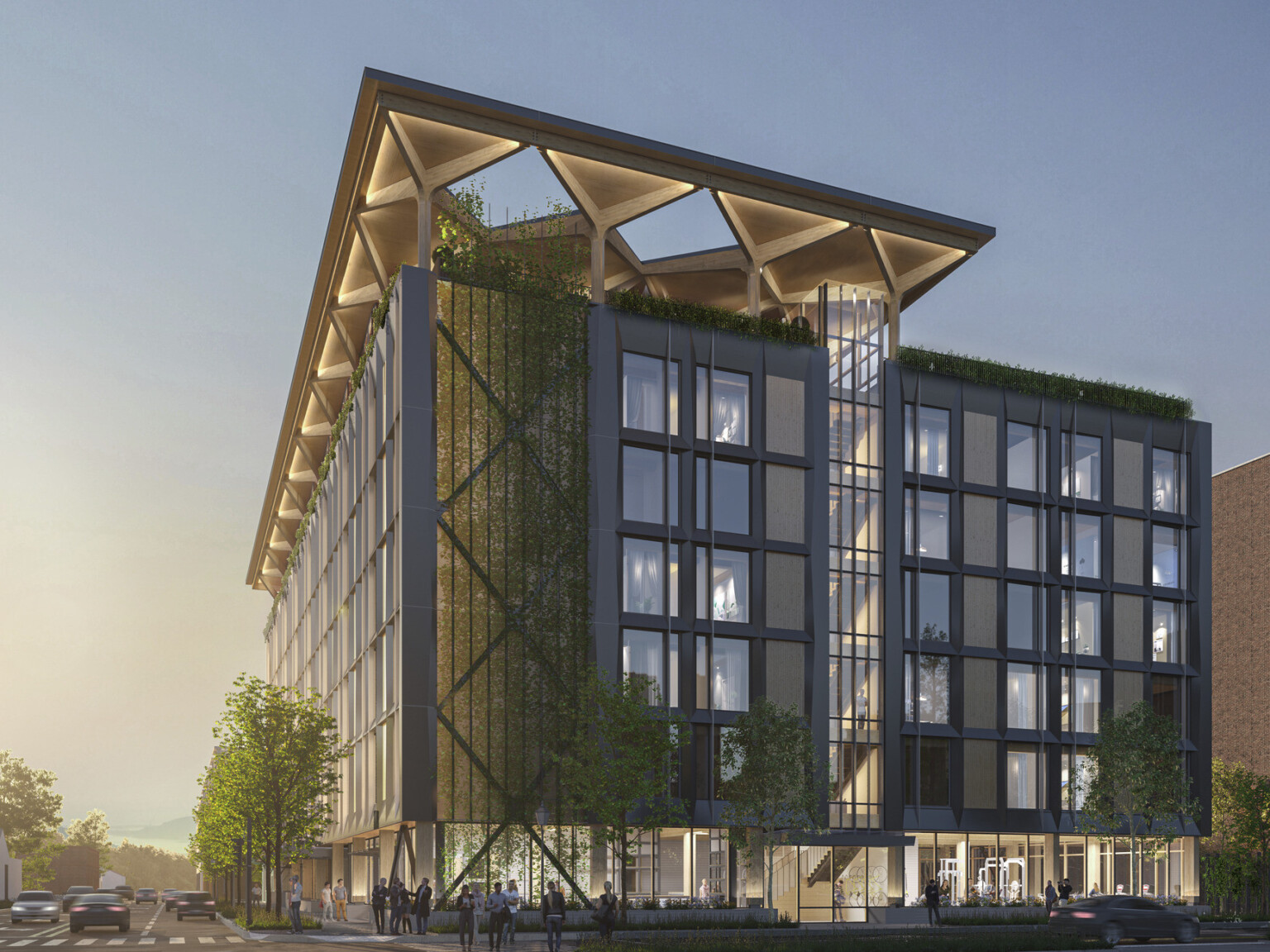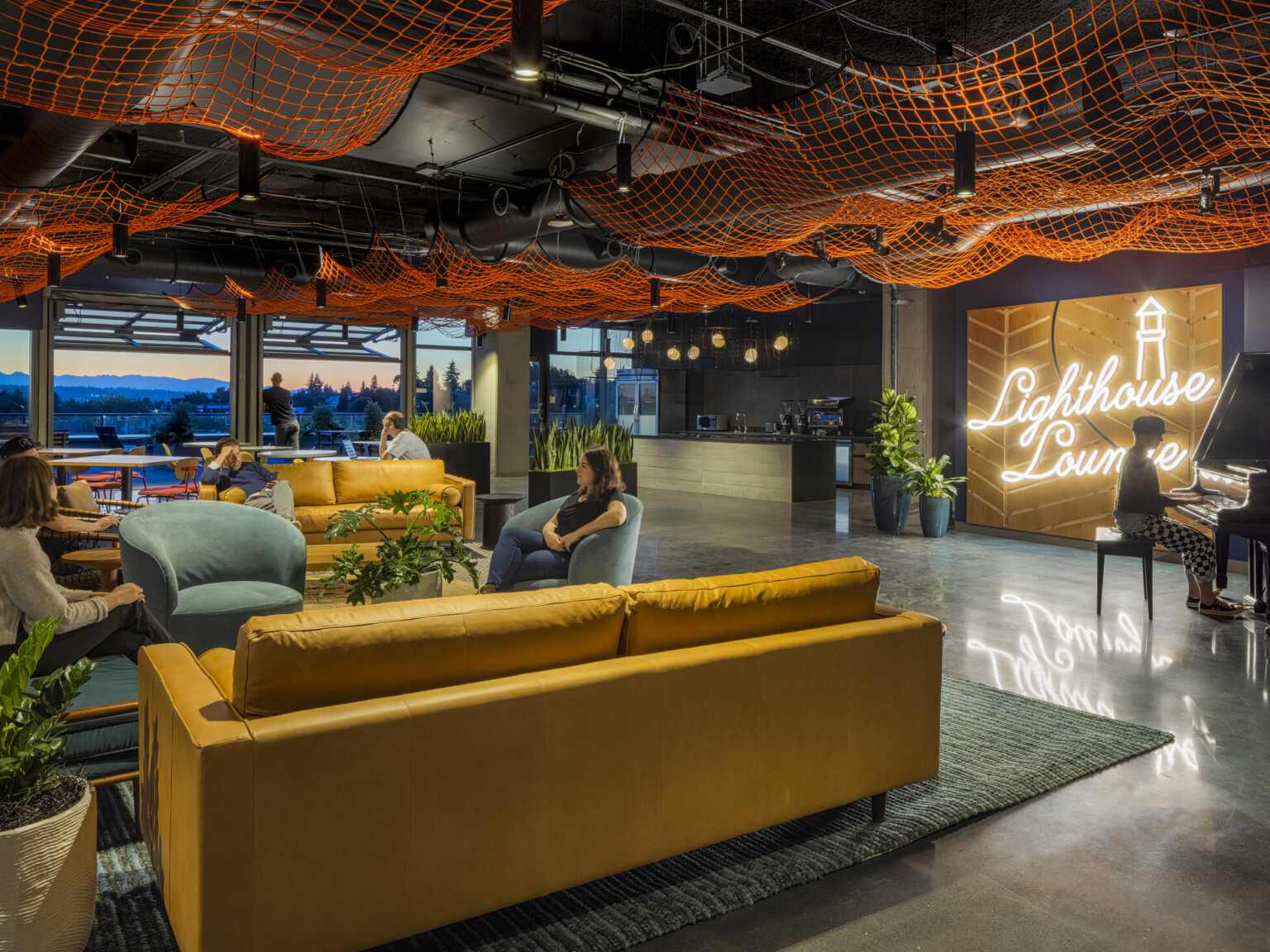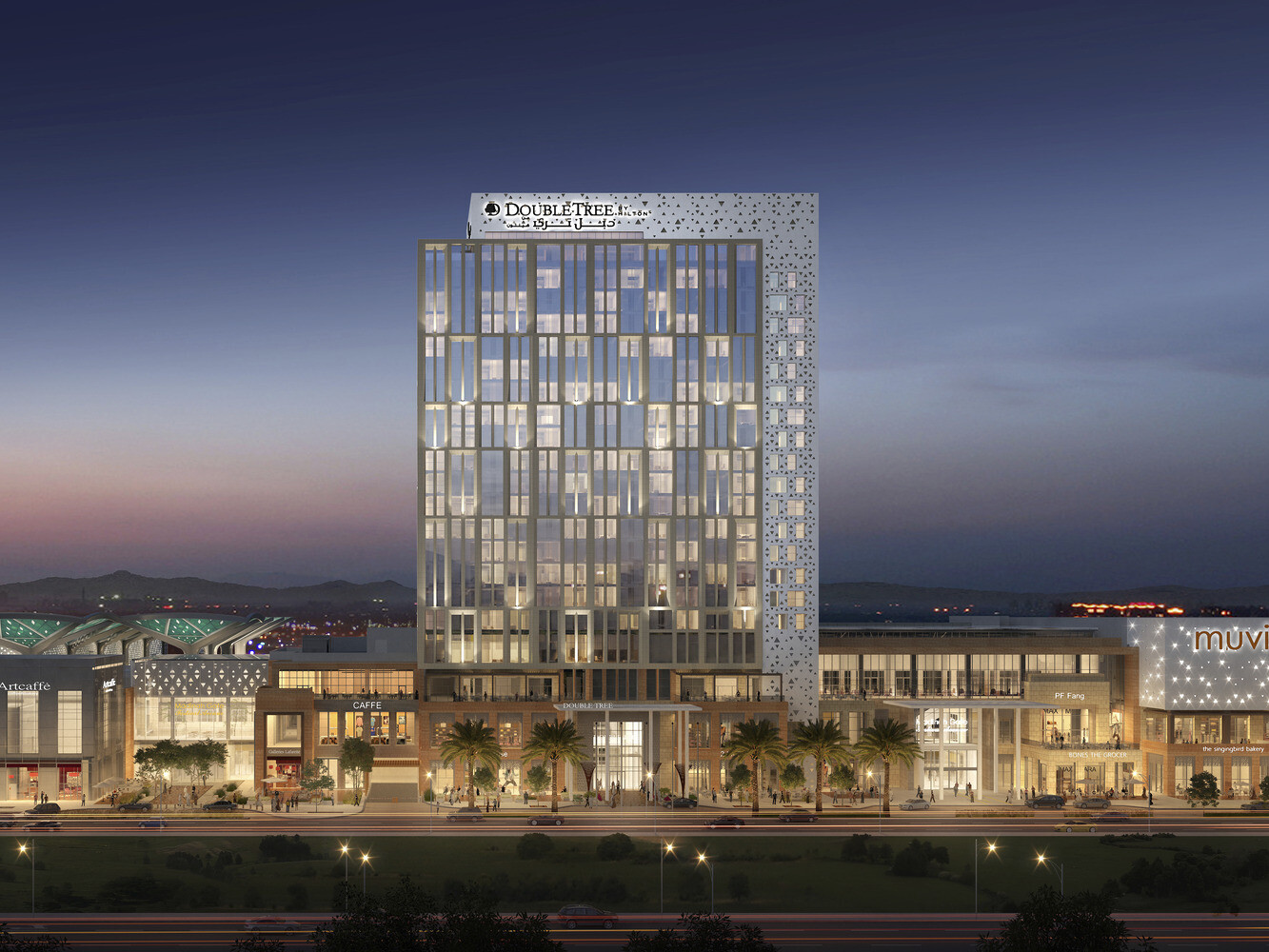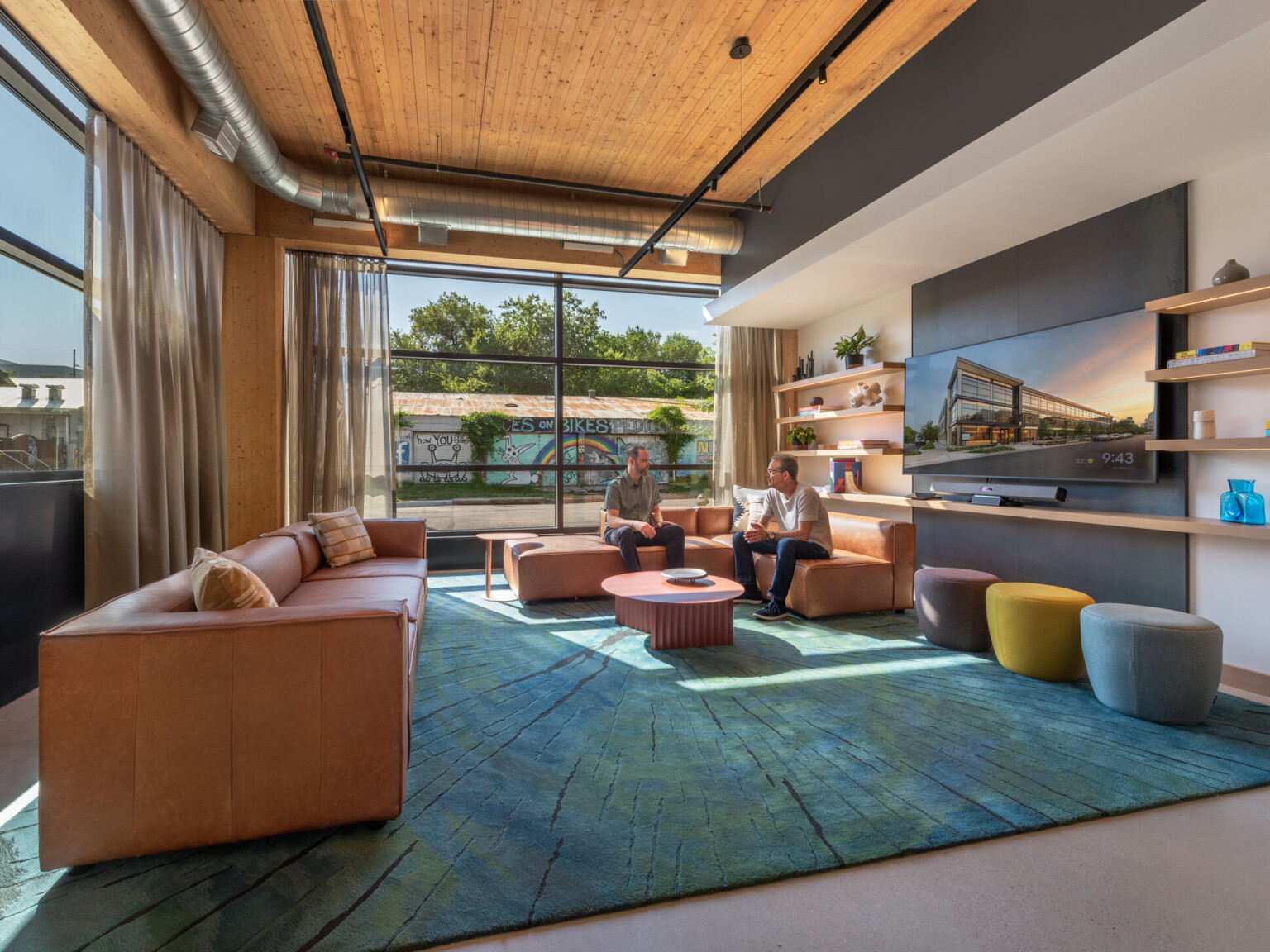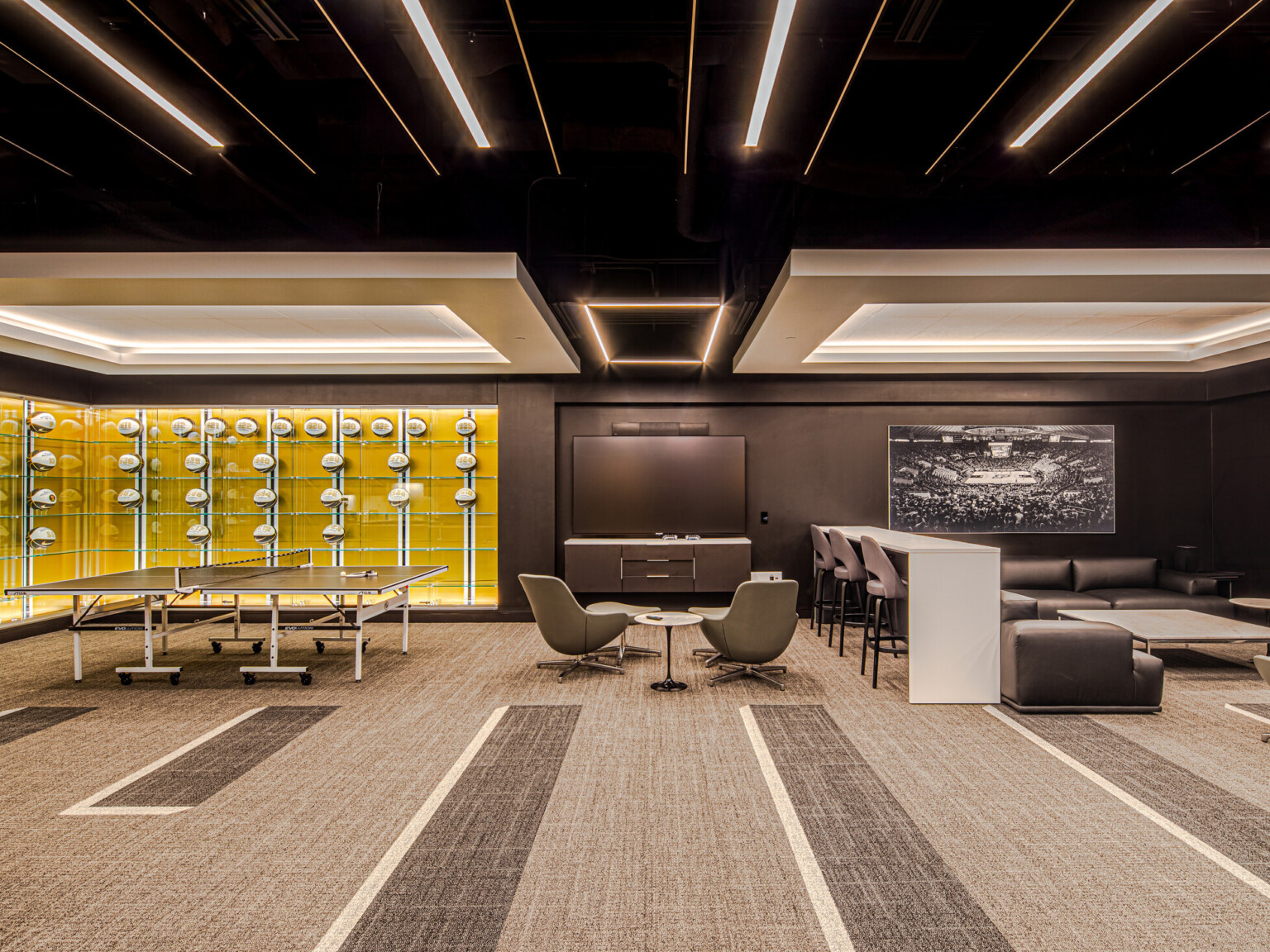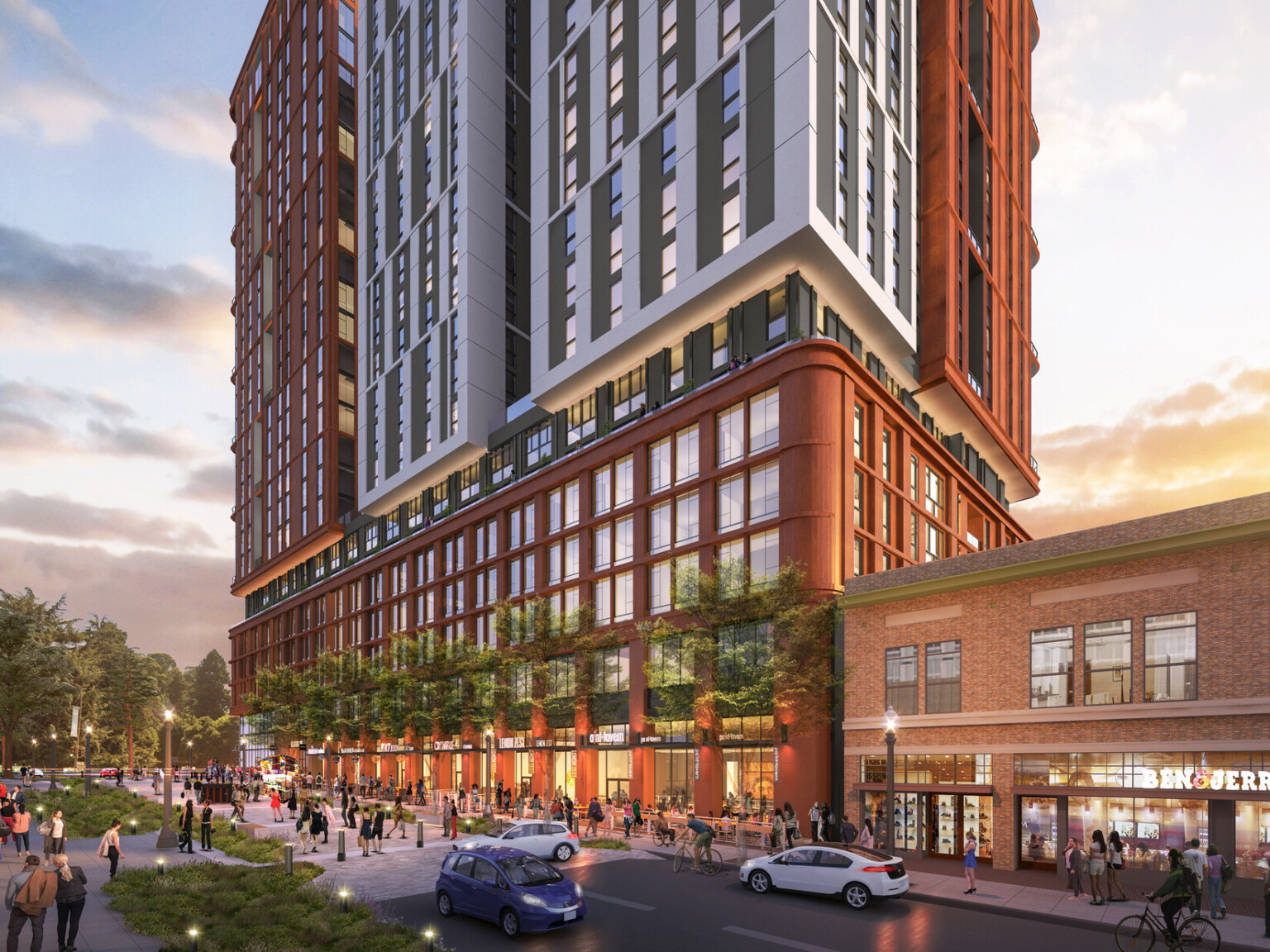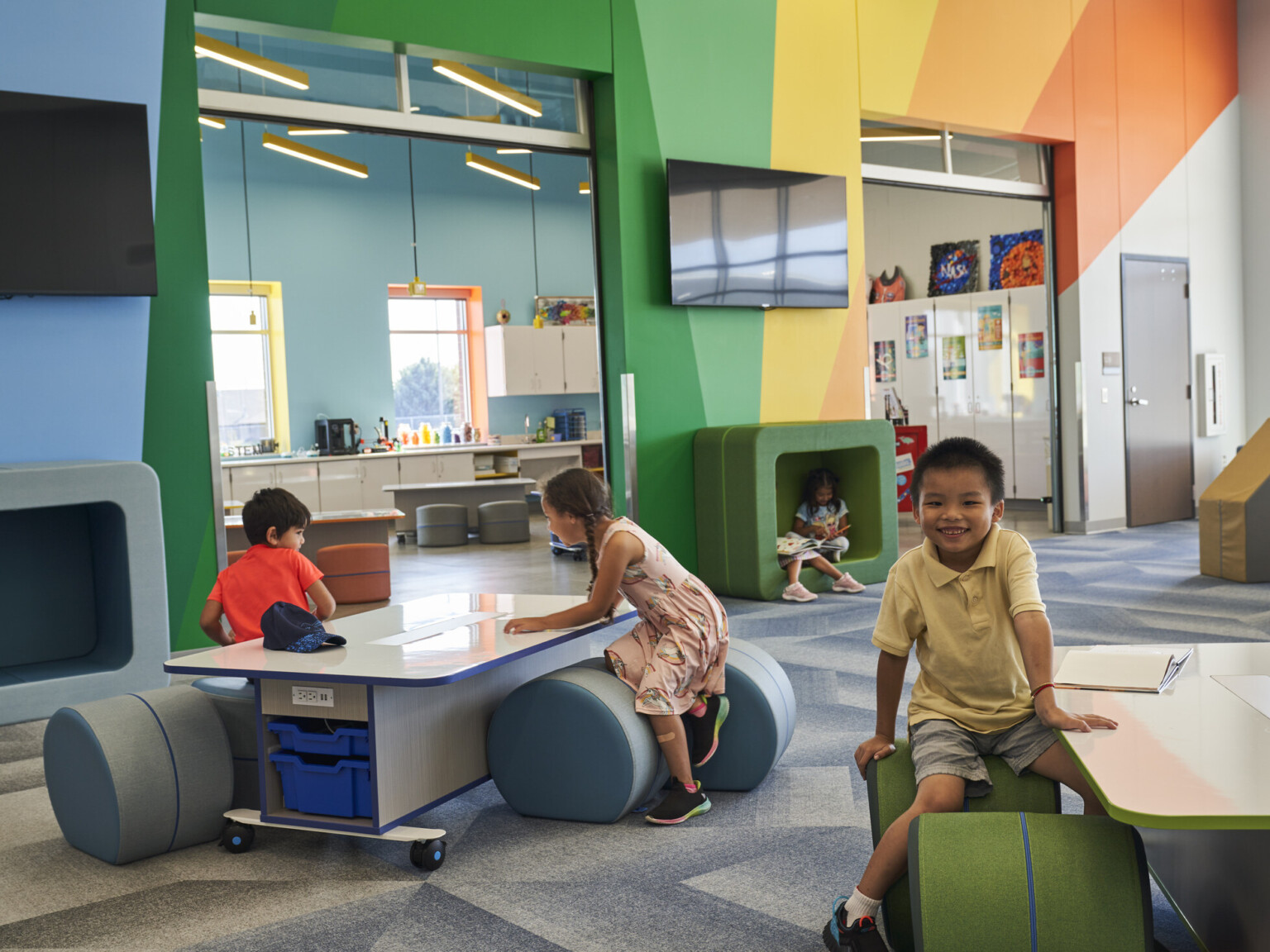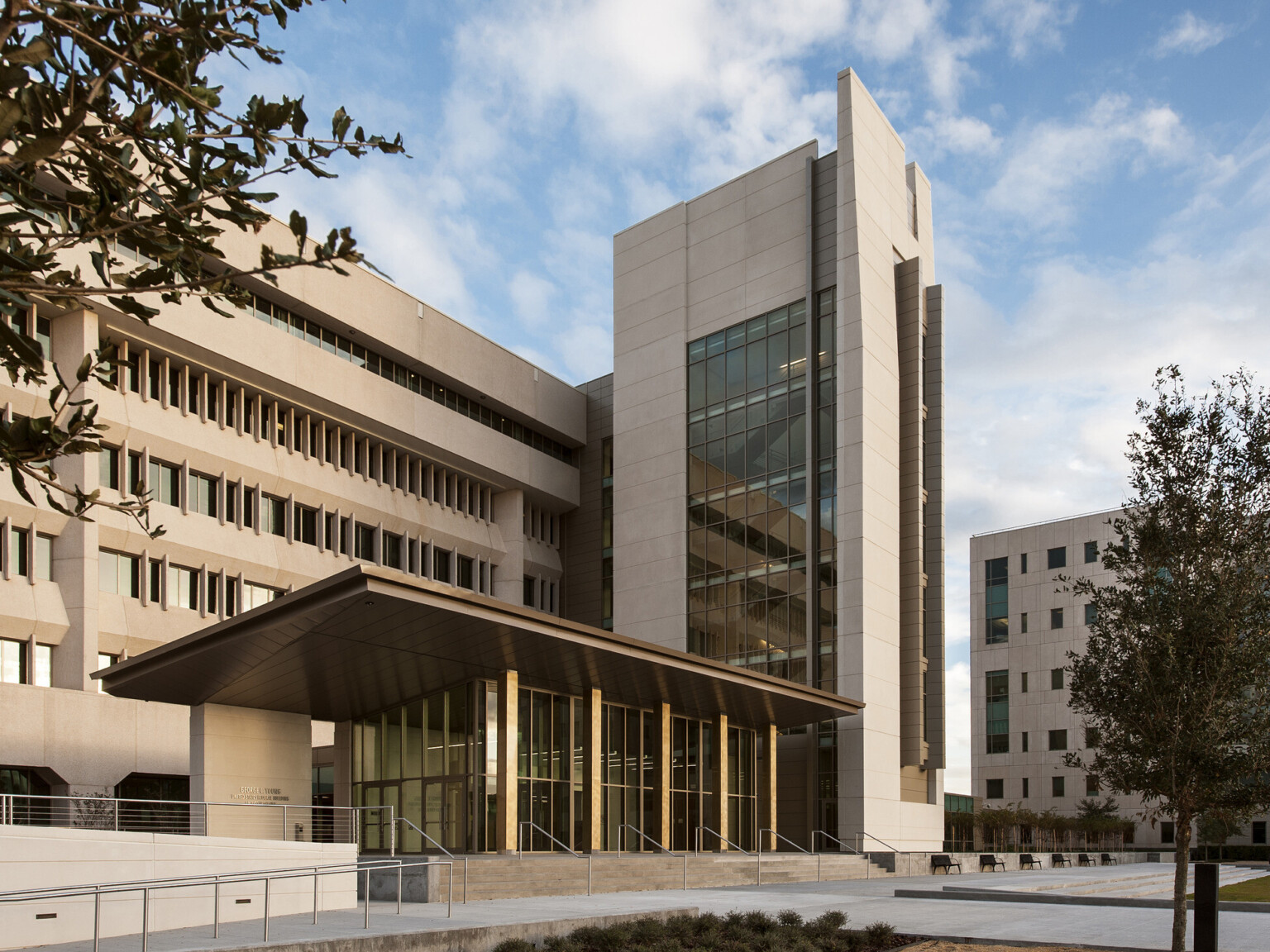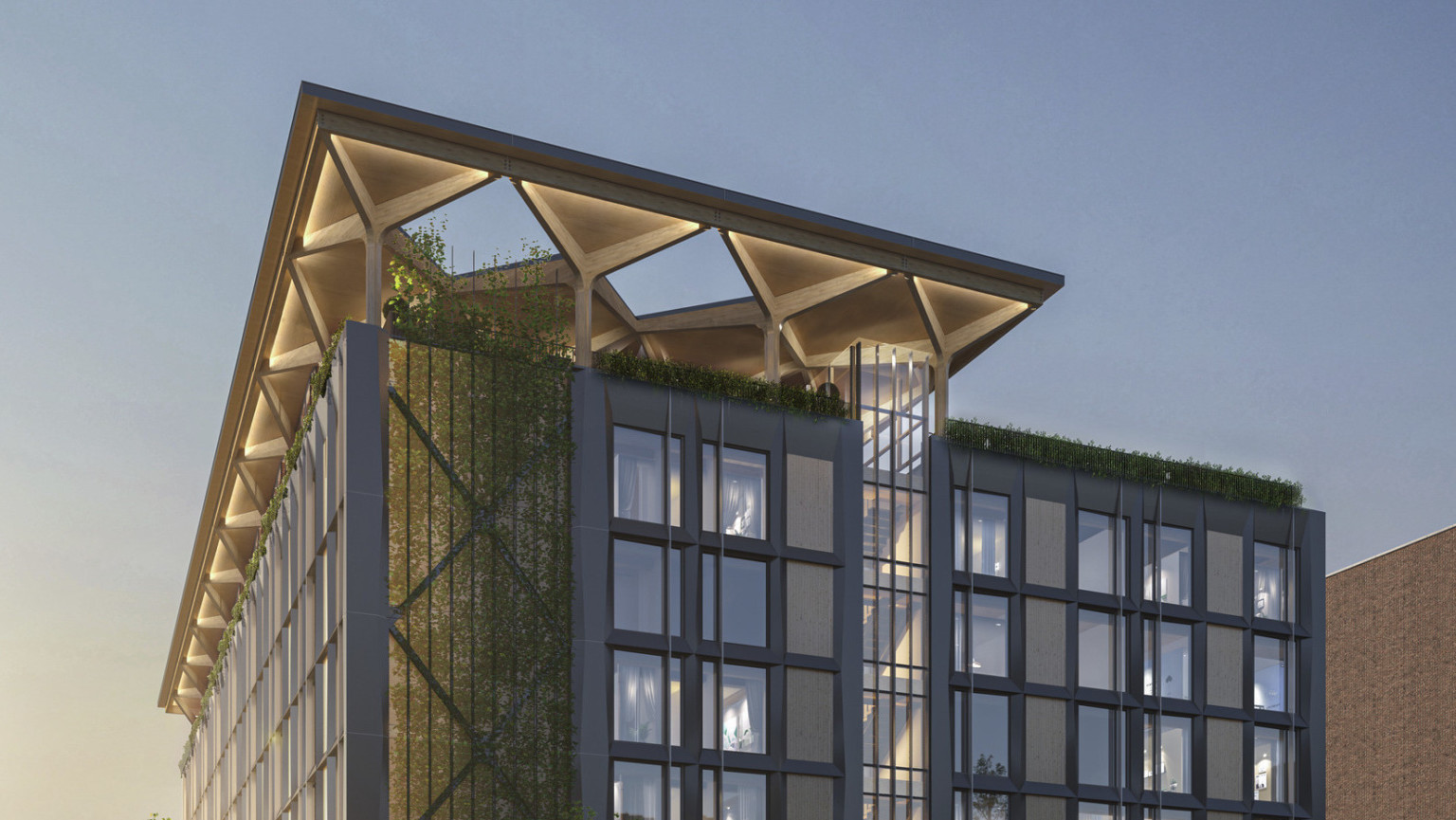
Mass Timber Innovation: The Hospitality Prototype
Mass Timber for the Masses
The U.S. Forest Service’s grant opened doors for our team to take the design of a timber hotel to a complete concept, with the necessary code and user experience research to back up our ideas. Designing as if this were reality means accounting for site constraints, weather, local code, and other considerations in developing an actual building. This strategy is essential for calculating wood’s carbon impact and cost and showing hospitality owners, developers, and guests that they can have a sustainable, cost-effective hotel without giving up a beautiful, top-of-the-line experience.
Our mass timber-hotel prototype derived from a collaborative research initiative involving architects, interior designers, engineers, developers, hoteliers, federal bodies, and educators. It removes perceived barriers to hospitality timber construction by definitively and objectively dispelling common objections, quantifying environmental and health benefits, and calculating a compellingly competitive cost model. Most importantly, it takes a decidedly different tack than other flashy, sky-high timber concepts that can only get off the ground when a city bends the code. Under the 2021 version of the most adopted building code and typical site adaptions, developers can build this prototype in any North American city.
We want to make the sustainable option easy and affordable to ensure it is widely accessible and appealing. Our goal for this prototype is to remove the hurdles a developer could face if they took on a project like this alone. Our concept is mass timber for the masses.
Material Myth Busting
Sound, structure, and safety are the three main concerns with timber working in the hospitality space. The research team set out to test these myths, debunking them one by one.
Sound
We sized the prototype’s rooms to be easily modified to accommodate various hotel brands and service levels to avoid limiting the design to boutique or luxury markets. However, we modeled the prototype after Marriott’s industry-leading hospitality standards. Acousticians modeled timber assemblies to discover a unique combination of structural, wall, and connection details that meet the hospitality giant’s particular sound requirements.
Structure
Structural engineers tested timber structural modules against cost and typical hotel room modules, finding the sweet spot where the space between structural members neatly houses a hotel room with minor modification. Advancements in wood and fire science meant clearing the perceived life safety barrier: fire modeling shows the prototype assembly meets performance code with no disadvantages.
Safety
The catalyst for our project was the 2021 update to the International Building Code (IBC). Before this update, limitations for mass timber buildings were based on similar light wood framing – despite its structural potential. The previous restrictions interfered with designing multiple stories and the total area that would make sense financially to a developer – leading them to choose a cheaper building option. We can now leverage mass timber’s strength to design hotels sized similarly to steel-frame, with the advantages of a comparative price point, modularity, and prefabrication. Advancements in wood and fire science also meant clearing the barrier presented by fire safety; materials innovation has improved the strength and resilience of engineered lumber. Because of these significant changes to the code, we feel that it has become a viable option for developers.
Changes in the IBC meant we could incorporate a stunning roof deck into our design, an amenity that many hotels use to attract guests and community members looking for a great spot to dine and relax. The sustainable ethos of the hotel is woven throughout the concept design by incorporating other natural or minimally processed materials, encouraging physical activity through an appealing interior stair and fitness space, and celebrating biophilia and nature through a rooftop garden and seasonal menu concept.
Quantifying the Benefits
Mass timber is a low-carbon, renewable, domestically sourced building material. The prototype’s 73,000 cubic feet of wood products directly reduce the building’s carbon footprint by 22% compared to a similar concrete structure; however, the benefit of timber extends beyond its first impact: trees absorb and store carbon.
Capturing this stored carbon inside a building where it won’t be released back into the atmosphere translates to an 86% carbon footprint reduction over the prototype’s life cycle. With the projected construction start of 500+ hotels anticipated in 2023, the ecological benefit magnifies even if timber is only used in a small percentage. Research also shows that staying at a timber hotel can boost relaxation and lower stress hormones, heart rate, and blood pressure – an added benefit for the leisure-seeking traveler.
Aside from its environmental benefits, mass timber can lessen cost and time. Imagine growing the materials needed for a beautiful hotel that sequesters tons of carbon in minutes, then transporting it to a building site with no special permits for an extra-wide or long load; The “kit of parts” represented in this design does just that. It can be shipped on a standard truck and erected with a crane. Engineered mass timber products are also ripe for digital production and prefabrication. The structural components of this building can be milled and laid out by computerized machinery with a high degree of precision, making it possible to increase the speed of construction compared to concrete or steel. Hotels like ours can be built anywhere, not just in open sites or rural contexts, without sacrificing valuable construction time.
Calculating a Cost Model
As a functional prototype, the module was feasibility tested across various North American climates, geographies, building zones, and standard codes. A comparative cost model between the timber prototype and a similar hotel built with concrete and steel saw the timber system priced out with a slight 4% premium. Although, developers can regain that quickly as timber construction efficiencies translate to opening weeks faster.
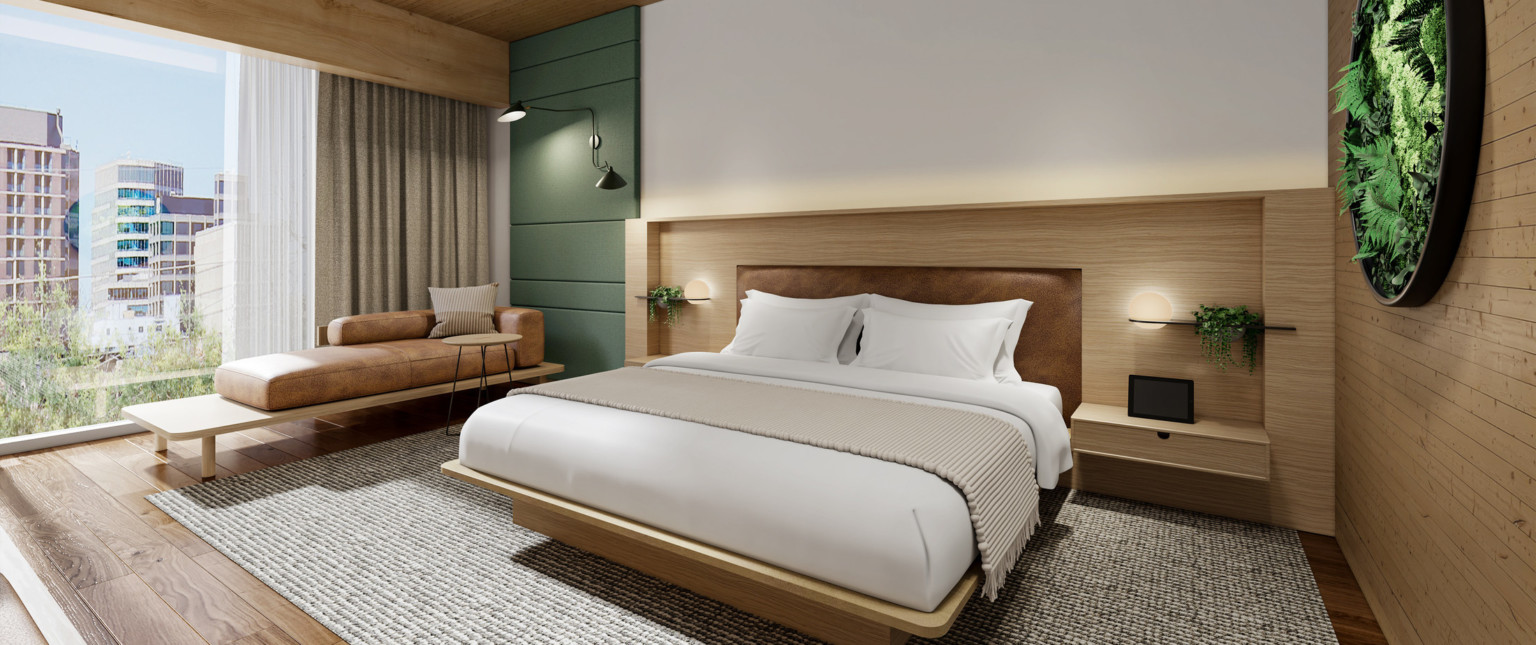
What’s Next?
After exploring hundreds of options in research and predictive modeling, it’s time to build the prototype. A guestroom prototype is in development at the University of Minnesota for acoustic testing. Beyond this project, it will be used for graduate student research from design to forestry management.
In bringing mass timber to the hospitality market, we are encouraging hotel owners and developers to embrace a better hotel situated well within the current market while also having side benefits regarding climate change and resource consumption. This prototype demonstrates a significant reduction in embodied carbon in a visible way that can attract a new market of travelers.
Responsible Disruptor
In early 2023, we were named one of three Responsible Disruptors in the second annual Metropolis Responsible Disruptors program for our Mass Timber Innovation: The Hospitality Prototype.
The program honors projects representing positive change, or disruption, encouraging healthy innovation in architecture and design. Our prototype caught the judges’ attention for its use of domestically grown, sustainable timber in a code-compliant hotel concept.
Learn more about our mass timber research or download the full report.
To receive ideas like this directly to your inbox, subscribe to our email list.


